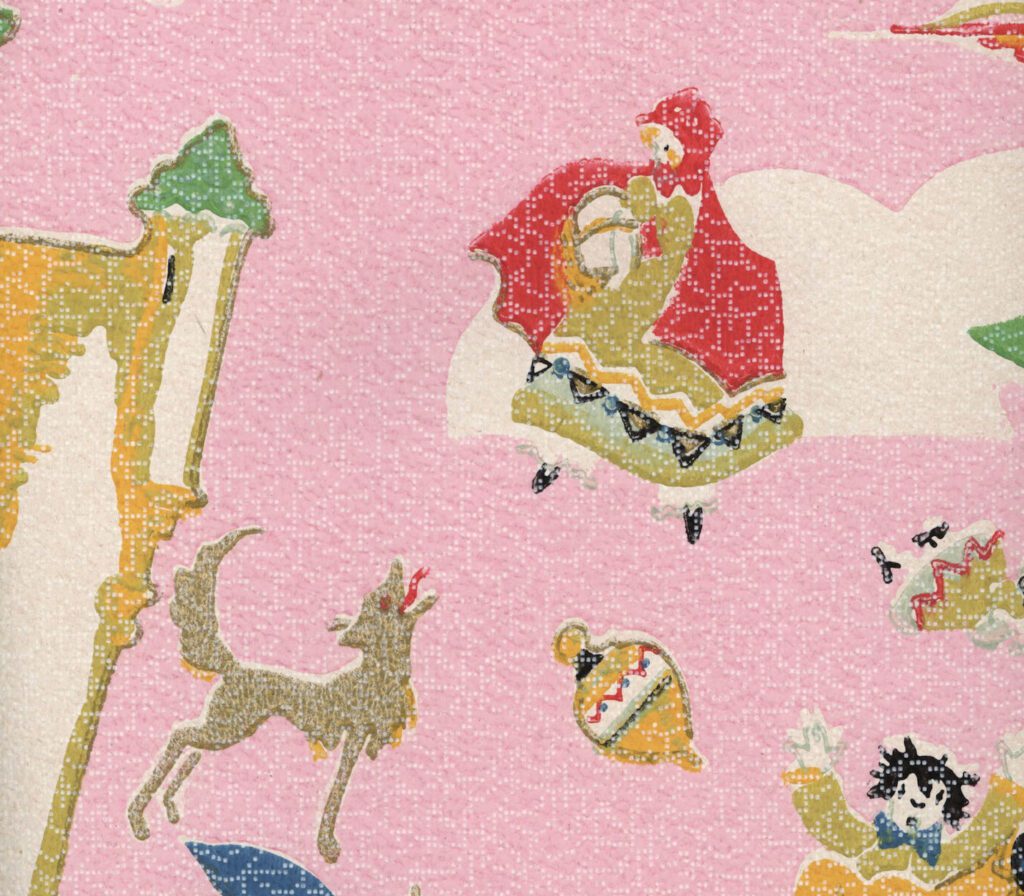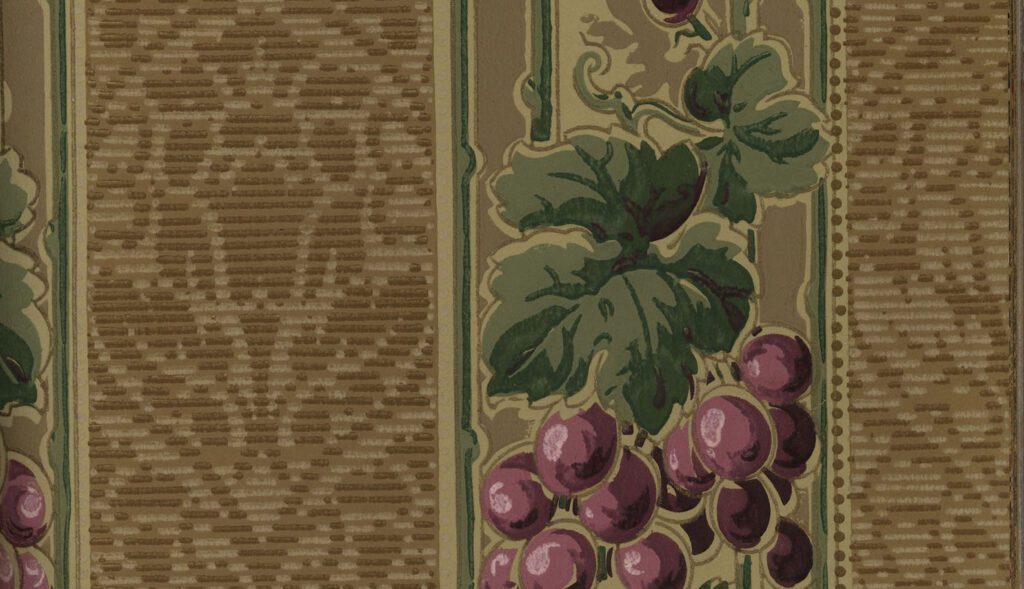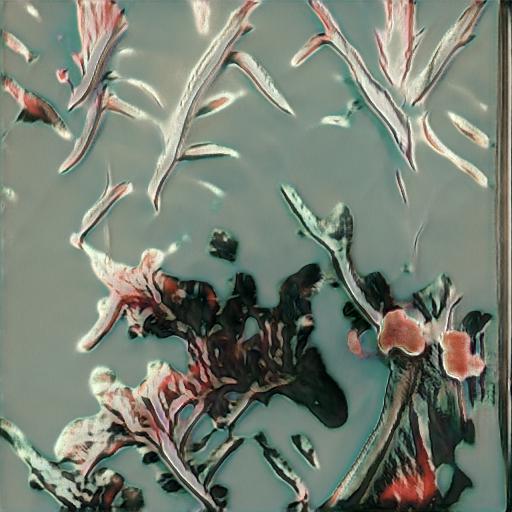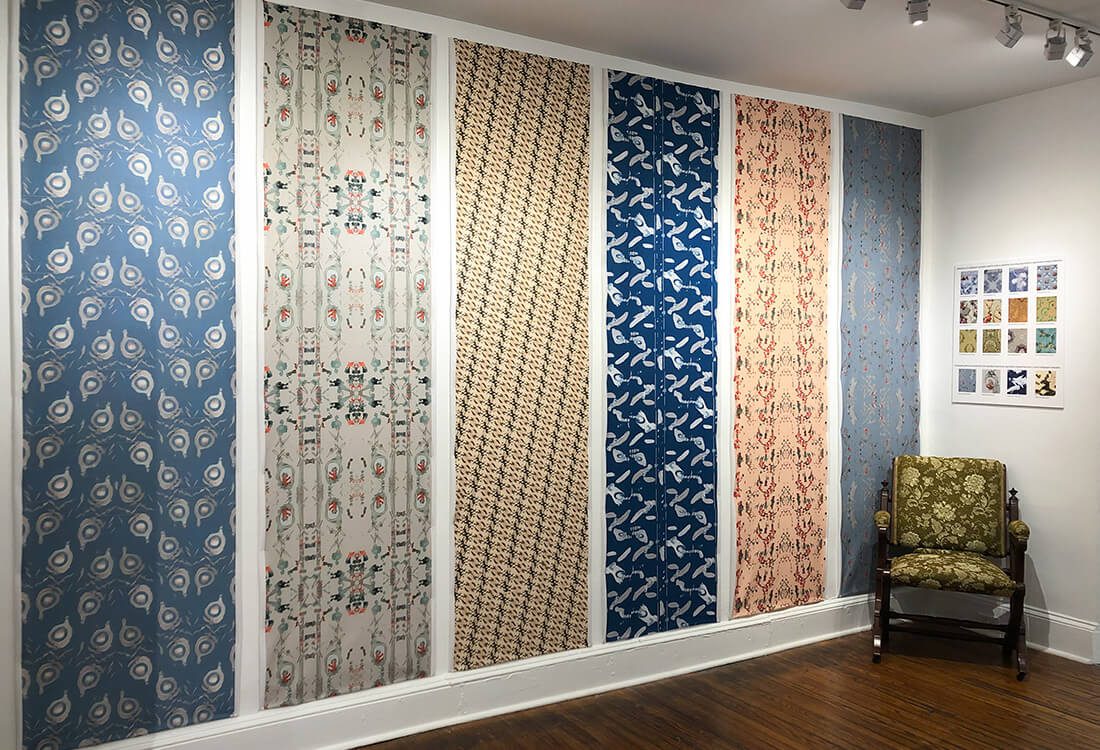Collaborating with 21st century software to recreate wallpaper designs from a collection of sample books, circa 1930-1965.
Written by Lisa Marie Patzer for DaVinci Fest Live, 2020
During early discussions about “Philadelphia Forthcoming: The Endless Urban Portrait”, the organizers of the show brainstormed about visual motifs that would connect the front and back spaces of the gallery. Jarrod Markman, Executive Director of Da Vinci Art Alliance, had the idea of creating site-specific wallpaper to connect the themes of architecture, interior design, domestic space, technology, and history. Working with a set of 600 jpegs sourced from wallpaper sample books from the 1930’s to the mid-1960’s, Lisa Marie Patzer and Andrew Hart collaborated on the fabrication of the wallpaper hangings.


Lisa Marie was curious to see how a machine learning algorithm would interpret old wallpaper designs and what new patterns a computer would generate from a model trained on the 600 samples. She uploaded the data-set into RunwayML, a Machine Learning software designed for artists, and trained a model against the images. The use of digital tools in interior design and architecture is standard practice and many programs such as Photoshop and AutoCAD utilize complex programming to translate ideas into digital representations. Machine Learning is a bit different, however, as it utilizes computer algorithms to iteratively learn from data and generate something entirely unique.
Once the model was trained against the 600 images of wallpaper samples, Lisa Marie was able to “run” the algorithm, prompting the computer to generate new samples from what it had learned. The result was an infinite number of unique images that retain certain qualities that reflect patterns and qualities of the original sample but aren’t traceable to any one specific image.



Working with Andrew Hart and the print shop at Jefferson University, patterns created from 6-8 computer generated images were printed on fabric. This iterative process is a metaphor for how design practices are transformed through the introduction of new technology. Through collaboration with both human and machine partners, the artists in the show were able to create one of a kind wallpaper that would have never existed if it weren’t for the computer contribution.



